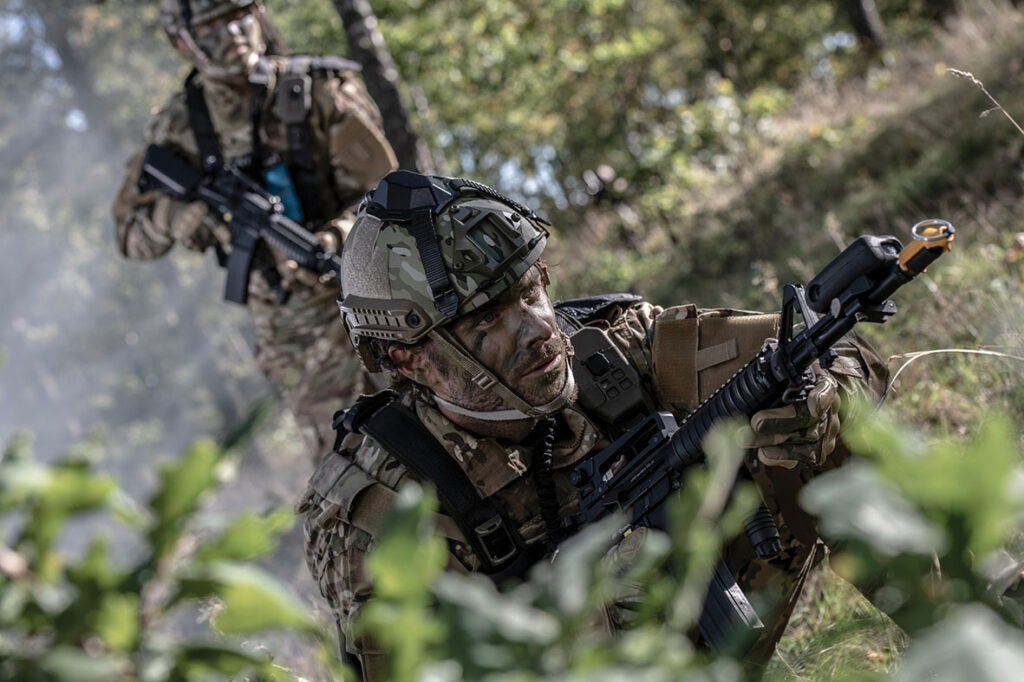DSEI Japan 2023: A Look at Saab’s Cutting-Edge Live Training System
Despite being one of the largest and best known defense companies in the world, at DSEI Japan 2023, Saab had only a modest stand when compared to companies like Lockheed Martin or Mitsubishi. It certainly didn’t have a prime location either and was located towards a back-corner of the showroom floor. Nevertheless, Saab’s stand was definitely one of the busiest with government officials, military officers and members of the defense industry literally lining up to speak to Saab representatives about their products. Of those, two were given extra prominence – Saab’s Live Training system and Saab’s anti-tank systems (Saab manufactures the a number of short range man-portable anti-armor and anti-structure systems, including NLAW which made a name for itself in the opening stages of the Ukraine war).
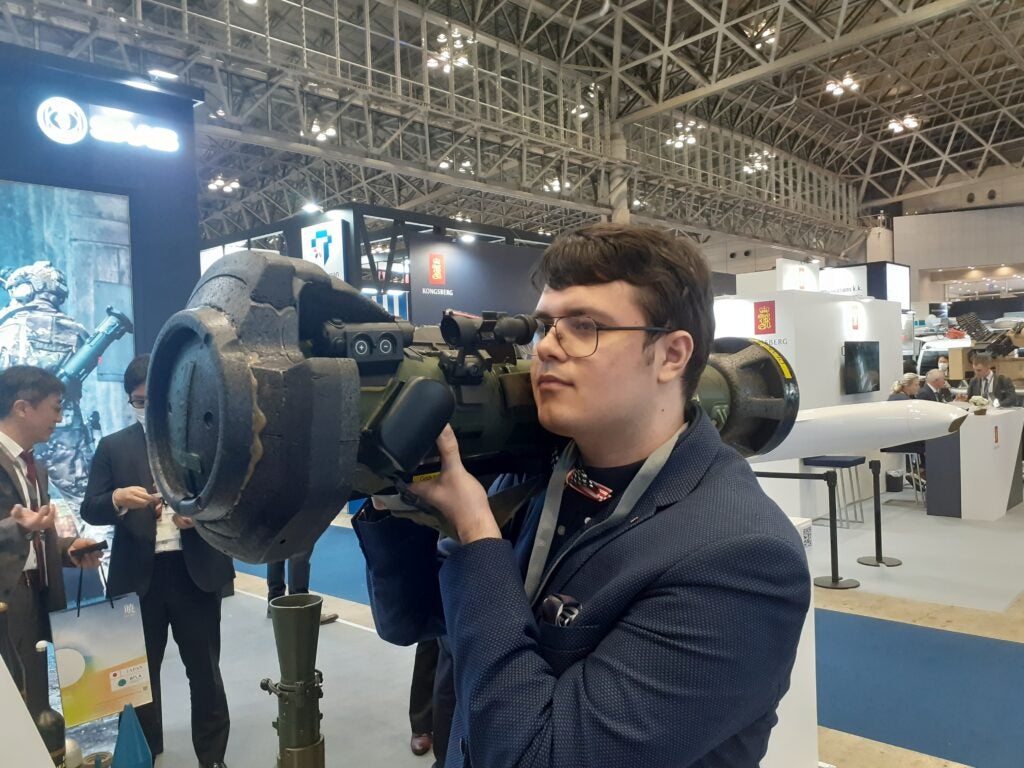
Overt Defense was able to speak about Saab’s live training system with Neil Patrick – Saab’s Marketing & Sales Director for Training & Simulation and a veteran of the British Army’s Royal Engineers. By equipping soldiers with special vests, gun-mounted infrared laser devices, and providing additional equipment for vehicles and heavy weapons, Saab is able to create a realistic training system that can be used to simulate engagements involving hundreds or over thousands of soldiers and vehicles.
Saab’s live training system is used by dozens of countries all over the world including Japan, Australia, Sweden, and much of NATO. A major success came last year when the US Marine Corps decided to adopt the system for its use. This wide user base is one of the strongest selling points of Saab’s training and simulation ecosystem as it allows for hosting highly realistic multinational training exercises – something which would be completely impossible between armed forces using different training and simulation systems.
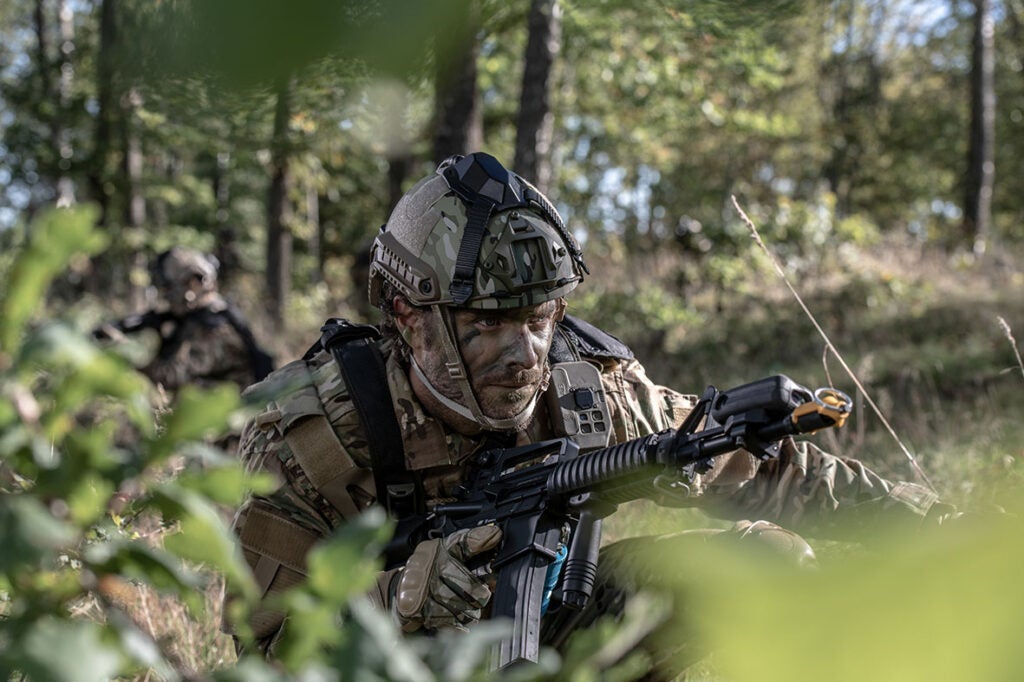
“We are the world’s global leader in live instrumentation. […] We dominate NATO and that customer base is growing by the month,” Patrick commented. At the core of this interoperability system is the IUC -or the Interoperability User Community:
“What that is, currently, is 16 member nations. They all use our system, they meet up to twice a year, and they discuss with us as the OEM what they want to do in terms of future capabilities, developments, etc. […]. Generally, you find a lot of these nations exercise together in Europe. So what’s really important these days – its used as a buzzword a lot at the moment – is interoperability. If organizations and armies want to train together, they got to have the same harmonious systems. Because it’s not just about lasers, it’s about the communication system – how you pass all that information that passes to the soldier back to a common exercise control. So there are two district factors here; a harmonious laser code which is called U-LEIS – Saab actually wrote that code. That means Universal Laser Engagement Industry Standard. It’s the standard optical code all of these countries use so you got like for like laser. You also got the communication system as well. Whatever happens to the vehicle, soldier or indeed a device, all of that is communicated back.”
One instance where Saab worked together with users to adapt to their specific needs came at the height of the war on terror. With IEDs becoming a major threat, armies wanted a realistic way to train for and simulate improvised explosives. Saab responded by developing a simulated IED system which can be used along with their other training simulation instrumentation kit.
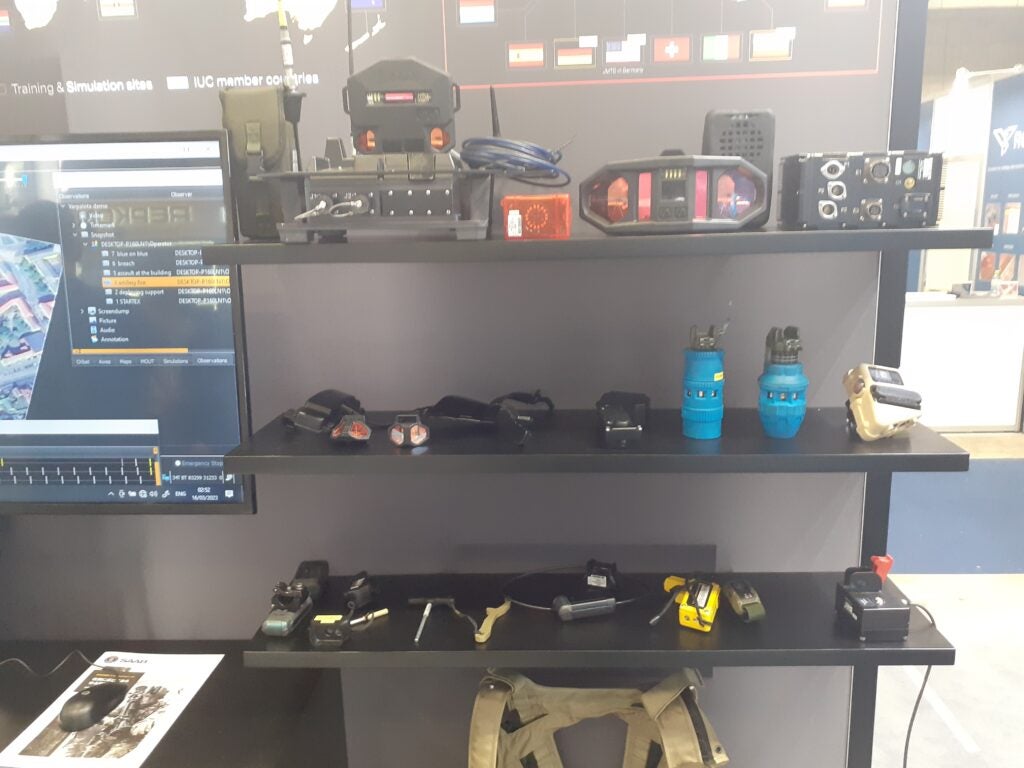
When equipped with the system, if a soldier fires a blank cartridge, a signal will be sent out at the same time via a special laser signal transmitter attached to the barrel. Special sensors are worn by the soldier and, should the soldier be wounded, killed or have a simulated bullet fly near them, they will receive acoustic, visual and haptic (via wristband vibrations) feedback which informs them of the fact. The system can also simulate artillery fire (the system will give an audio warning about the general distance and direction of artillery impacts) or grenades (with there being a certain probability of death or injury within the radius of a simulated grenade).
Patrick sees this as a major improvement over what the British army was doing back when he was active duty. “I’ve spent 30 years in the military. No exercise, no solider should ever fire a blank round without a laser on it because all he’s doing is just making noise”, he said. “They’re just going around playing cops and robber shooting off blanks.”.
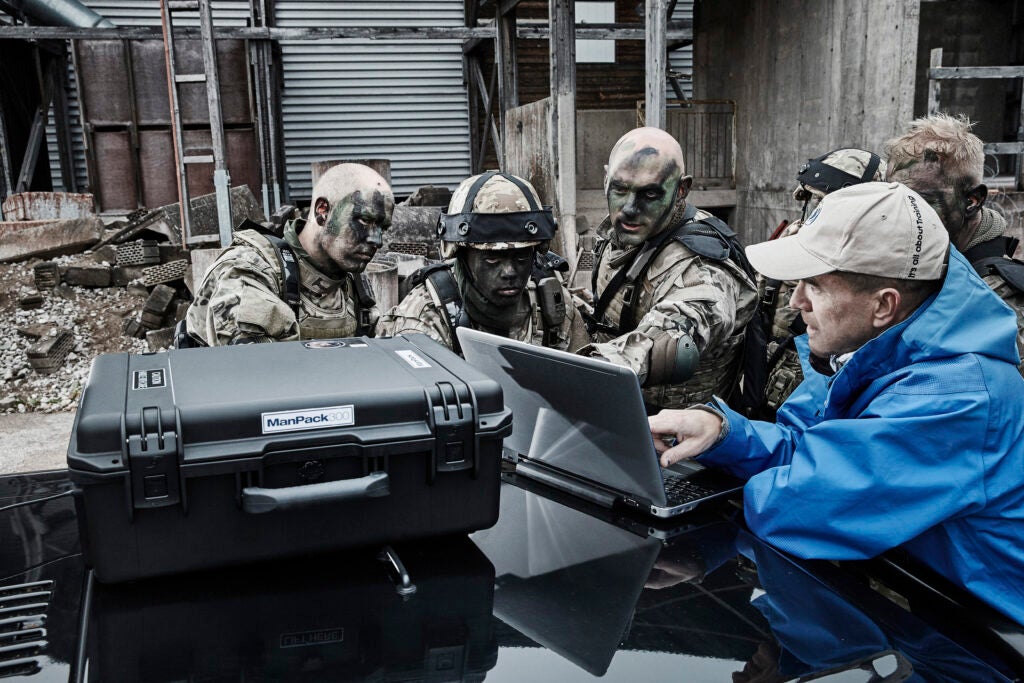
In addition, the system is capable of simulating engagements involving vehicles with Saab offering both a basic and premium line of sensor systems. The first is meant to be used on lighter, wheeled or logistics vehicles while the premium line is meant to be used to more accurately integrate heavier armored fighting vehicles as part of exercises. The system can simulate the effects of hits on the vehicle based on the direction they came from and what type of weapon was employed against the vehicles. Simulating anti-tank missiles is actually one of the greatest advantages of Saab’s live training system when compared to those of their competitors:
“We’re the only instrumentation provider who does two-way laser ballistic simulation. So we replicate true ballistic time of flight- from an anti-tank weapon to a tank shell. The laser works at the speed of light so when I stand here and fire an anti-tank weapon with a one-way laser, let’s say the engagement range is 800 meters, that tank is instantly hit. Where actually, there is a time of flight of probably three and a half seconds from me to that vehicle. If that vehicle is moving left to right, unless I’m doing the correct aiming procedures, that vehicle is gone. Its moved and that round is missed. For that kind of capability we have the m3 simulator. It replicates the full time of flight. We are the only OEM in this arena who can provide full ballistic simulation for combat vehicles and anti-tank weapons to augment the soldier’s systems.”
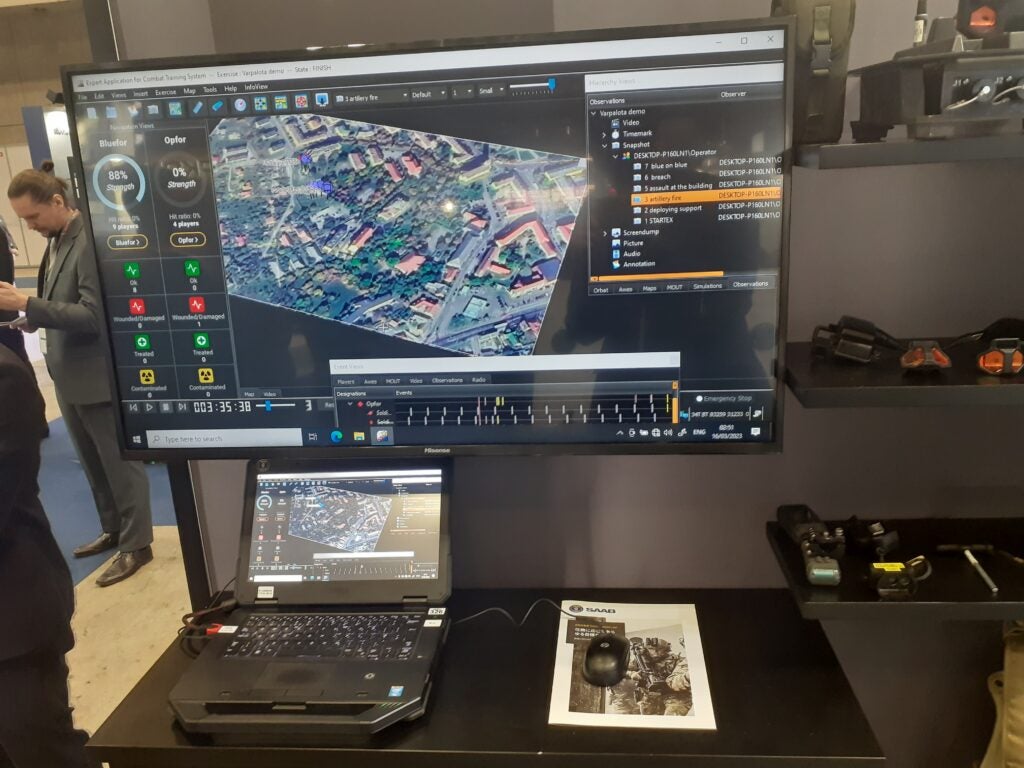
The results of the training exercise are transmitted (and recorded) to a computer program which organizes individual “entities” into squads, platoons and so on. This then displays information such as the location of every single soldier and vehicle at a given time on a Google Maps-esque display and even shows at what exact second each soldier fired each bullet. Using this system, it is possible to closely analyze mistakes and successes and to learn from them. Why exactly was a training participant “killed” by friendly fire? What decision led to the failure of a simulated ambush? It can also provide clear insights into the performance of individual soldiers and officers. Which officers consistently make intelligent battlefield decisions? Are there any soldiers who don’t fire their rifle?
While there system continues to evolve, as do threats and the character of war, it can certainly be concluded that today’s live training systems are a big step up from the hundreds of pages of rules governing simulated engagements and maneuvers just a couple of decades ago.

